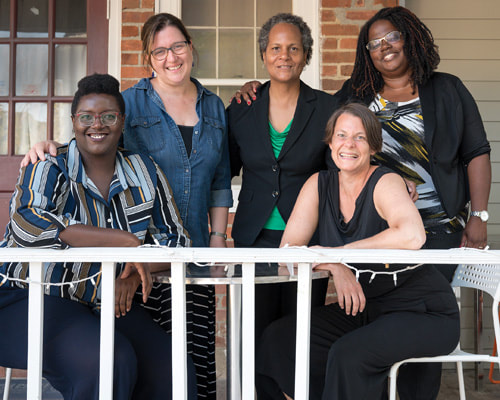|
Hannah Van Sickle { Town Vibe
Part of Kristen van Ginhoven’s personality is to challenge the status quo. As co-founder and artistic director of WAM Theatre (Where Arts and Activism Meet), she spent the last decade creating opportunity for women and girls. Today, she is at the helm of an organization poised to engage the power of art in dismantling systems of oppression. “The American theater is rumbling with our responsibility to be civic institutions,” she says of WAM’s partnering with Multicultural BRIDGE to bring Dominique Morisseau’s Pipeline, a powerful and thought-provoking examination of race, class, and the American education system. The play opens at the Elayne P. Bernstein Theatre at Shakespeare & Co. in Lenox on October 24. “This collaboration is advancing a much-needed national conversation on the crisis of the Black family in the U.S.” says Gwendolyn VanSant, CEO and co-founding director of Multicultural BRIDGE. It is through the story of one young Black student’s success and challenges that the long-standing cultural and systemic barriers faced by his family are brought to light. The effects of the school-to-prison “pipeline” stretch far beyond the poor; it is a disturbing national trend that criminalizes youth, effectively funneling them out of schools and into the criminal justice system, where they are isolated and punished. “The constant pressure and trauma of racism can touch any family at any moment,” VanSant says. Van Ginhoven looks at the production, first presented as WAM’s Fresh Takes reading in August 2018, as an example of how unconscious bias is a teacher. “It’s the microaggressions that, over an extended period of time, burst,” she says of behavior so deeply ingrained that it is rarely questioned. She and VanSant are looking to grow together—an approach that builds relationships and plants the seeds for change. Morriseau’s play tells the story of Nya, an inner-city public high school teacher, simultaneously committed to her students and desperate to give her only son opportunities he will never have. When a controversial incident in his upstate private school threatens to get him expelled, Nya must confront his rage and her own choices as a parent. The play is a deeply moving story of a mother’s fight to give her son a future without turning her back on the community that made him who he is. “Our assumptions about the way the world works were created by white men who did not take everyone into consideration,” van Ginhoven points out. But even from her perspective—as an artist, as a woman, as an immigrant from Canada—anything she had previously perceived as a mark against her paled in comparison to the privilege she has. Understanding intersectionality—the varying levels of power/privilege and oppression/discrimination that come with different identities—provides a constant undercurrent in van Ginhoven’s work. And WAM considers itself “another spoke in the wheel” with regard to the comprehensive Cultural Competency work BRIDGE is doing throughout the county, says van Ginhoven. WAM, one in a cohort of seven arts institutions in the area, took part in the yearlong intensive Arts Build Community Capacity Building Program, presented by the Berkshire Taconic Community Foundation. The initiative seeks to build trust, cooperation, and unity in a community, while strengthening the arts as a sector. Grant proposals were submitted, aimed at breaking down the barriers of cultural participation for underserved Berkshire County residents—including youth, people of color, immigrants, and low-income communities. WAM was awarded funding for the Pipeline partnership. With that financial support, WAM set out to identify organizations whose missions overlapped with the themes addressed in Pipeline; BRIDGE was a natural fit. The collaboration began with a three-day retreat for members of both organizations. It formed a basis for moving forward—one where time was not an issue—and the decision-making process was wholly collaborative. “BRIDGE became part of the art and [WAM] became part of the social justice piece,” says van Ginhoven. As to the result? VanSant calls it “a whole picture of how to advance racial justice and equity for people who do not select to show up at BRIDGE events.” That means reaching an entire audience who would not otherwise be reached. VanSant and van Ginhoven, both very much aligned in their organizational missions and as leaders, are excited not only to use one another’s respective platforms to advance their own work, but also to model an intentional way for other arts organizations to do this type of work. “Through the arts, we look forward to creating more local opportunities for authentic discussion around the stark ethnic disparities that exist for Black families as we identify solutions through activism,” says VanSant, pointing to this type of collaboration as “helping us enter these conversations with courage.”
0 Comments
|
Archives
July 2024
Categories |
Contact Us |
Stay Connected
|


 RSS Feed
RSS Feed